Articles about Accesibilidad
Color Contrast: Infographics and UI Accessibility

Sufficient color contrast is a prerequisite for readable text and accessible websites, and visual contrast has a significant role in the updated Web Content Accessibility Guidelines (WCAG 3.0). Unfortunately, contrast is often given secondary importance by designers in lieu of other design elements. This article discusses color contrast for text readability and user interface design, the criteria for minimum color contrast of varying sizes of text, and methods to verify and improve your color contrast ratio, including interactive tools. [Leer más]
(English) Designing in Healthcare: Learning through Experience

(English) A UX graduate entering an unexpected field yields career lessons gleaned from experiences in healthcare and Alzheimer’s research. [Leer más]
(English) Diversity, Equity, and Inclusion (DEI): Inclusive Design Plus Accessibility

(English) Diversity, equity, and inclusion (DEI) initiatives in the United States and across the globe result in inclusive and accessible design principles that can be implemented in everyday practice. [Leer más]
(English) Inclusive Design (Book Review)
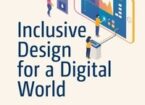
(English) Inclusive Design for a Digital World includes practical advice and strategies for designing inclusive and accessible products that take into consideration best practices used around the world. These strategies also ensure that people who have auditory, cognitive, neurological, physical, speech, visual disabilities, or situational challenges with access are fully able to use products we design. [Leer más]
Fosos tecnológicos: el oscuro patrón de las barreras de fricción intencionadas

(English) Corporations desire to hear their customer complaints…or do they? We take a close look at ways companies use technology to raise the drawbridge on customers. Technology barriers exist for many reasons; some are good and some are bad. Automated customer service systems can speed up the support process for customers while cutting costs for businesses. But when they are designed to slow customers down, they risk becoming a "technology moat": an intentional obstacle to make customers think twice before proceeding. In this article, you will learn the difference between technology moats and dark patterns and how to spot them. [Leer más]
Accesibilidad digital: crear experiencias inclusivas y evitar demandas
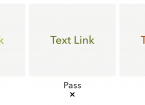
Web accessibility has always been good practice but, starting this year, it is a legal requirement that user experience professionals can no longer ignore. [Leer más]
Fuentes variables: el futuro de la tipografía

Las fuentes variables han llegado y van a cambiar el modo en el que piensa acerca de la relación entre la tipografía y la experiencia del usuario. [Leer más]
Adoptar un enfoque de experiencias de usuario para aprender sobre accesibilidad de sitios web
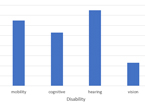
El primer paso para incluir la accesibilidad en un proyecto es eliminar los mitos que suponen que los sitios web accesibles son “feos”, costosos, difíciles de mantener o inapropiados para la marca. [Leer más]
La forma de hacer accesible el diseño de movimiento: coreografía de experiencia de usuario, parte dos

Cumplir con algunas pautas base sobre accesibilidad permite que su diseño de movimiento sea más inclusivo y lo ayuda a agregar refinación y madurez a la experiencia del usuario en su totalidad. [Leer más]
Cultivando la colaboración con la negociación estructurada (Reseña de libro)

Reseña de Structured Negotiation (Negociación estructurada) de Lainey Feingold. Un método para resolver las disputas basado en la colaboración y no en el conflicto. [Leer más]
Banca en línea para todos: diseñar para personas mayores

Realizar un diseño para personas mayores o con poca experiencia en informática requiere que se definan estrictamente las funcionalidades del sitio web, flujos de trabajo claros y mínimas distracciones en la página. [Leer más]
Haga accesibles sus presentaciones: siete pasos sencillos
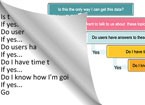
Se trata de pautas y consejos prácticos sobre la creación de presentaciones accesibles, como el tamaño de fuente, la redacción de texto alternativo, la difusión de gráficos y tablas, el orden de la información de las diapositivas, entre otros consejos. [Leer más]
Probando la Tecnología del Futuro: Experiencia de Usuario para una Población que Envejece
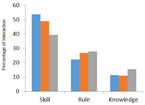
Un análisis de investigaciones actuales fue usado para crear un marco de referencia para hacer análisis de mercado y de competidores al pensar sobre las necesidades de adultos mayores en el diseño de tecnologías asistidas. [Leer más]
Historiales Clínicos Personales Útiles: Diseñar para la Accesibilidad y la Innovación

Diseñar específicamente para personas con discapacidades puede dar como resultado historiales clínicos electrónicos personales que no sólo sean accesibles, sino innovadores, útiles y beneficiosos para todos. [Leer más]
Comunicación con los Pacientes: ¿Qué Pasaría Si Tuviera una Discapacidad del Habla?
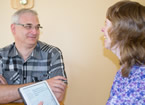
Una visita al médico puede significar una pérdida de la dignidad y la confidencialidad para los pacientes con discapacidades del habla porque los profesionales de atención médica rara vez saben cómo interactuar con ellos. [Leer más]
Más que sólo una transcripción: el subtitulado como práctica artística
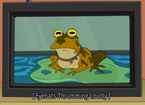
El subtitulado es más que solo una transcripción y es crucial para la accesibilidad y la usabilidad. Este artículo presenta textos de subtitulado como inherentemente subjetivos e interpretativos. [Leer más]
Servicios de personalización: creación de terminales públicas accesibles

Una nueva generación de cajeros automáticos y máquinas expendedoras accesibles y usables utiliza dos enfoques de interacción para la personalización con el fin de superar las barreras a las que se enfrentan muchas personas, incluidas las discapacitadas. [Leer más]
Comunicaciones de campo cercano (NFC, por sus siglas en inglés): cómo pueden ayudar las NFC a las personas con discapacidad visual

La tecnología de comunicaciones de campo cercano (NFC, por sus siglas en inglés) tiene el potencial de crear experiencias excelentes para las personas con discapacidad visual. Este artículo analiza algunas incursiones iniciales en NFC aprovechadas para lograr la accesibilidad. [Leer más]
Una web accesible para todos

Una reseña de A Web for Everyone (Una web para todos) de Sarah Horton y Whitney Quesenbery. Una visión de un futuro en el que todos podemos utilizar la web. [Leer más]
¿Deberíamos Llevar a Cabo este Estudio de Usabilidad? Consideraciones Éticas en las Evaluaciones

¿Puede ser poco ético realizar una evaluación de la experiencia de usuario? Una evaluación de la accesibilidad antes de un test de usabilidad puede evitar situaciones frustrantes, difíciles o problemáticas. [Leer más]
La Dichosa Palabra «A»: Accesibilidad como Parte de UX
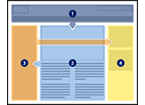
La accesibilidad suele ser mal entendida, mal interpretada o difamada. Para generar experiencias digitales extraordinarias, la accesibilidad debe ir de la mano de la usabilidad, la creatividad y la tecnología. [Leer más]
La Magia de la Identificación del Dinero Móvil
¿Cómo identifican los ciegos los billetes estadounidenses y de otras monedas sin ayuda? Algunas aplicaciones móviles accesibles están permitiendo que las personas con visión reducida ganen en independencia. [Leer más]
(English) Separate but Unequal: Web Interfaces for People with Disabilities
(English) A separate, unequal interface is not an acceptable accessibility solution. Good design values having one interface accessible to the widest range of users and situations. [Leer más]
(English) Looking Closely at e-Learning: Vision Research Reveals Ways to Improve Children’s Experiences

(English) Research on the effects of children’s long-term computer use is extremely limited; there remain key research questions that need to be answered. [Leer más]
(English) Designing for Children with ADHD: The Search for Guidelines for Non-Experts

(English) Expert designers sensitive to established usability guidelines should be capable of designing software that is suitable for both ADHD and non-ADHD children. [Leer más]
(English) Integrating Usability and Accessibility: Things Every UX Professional Should Know
(English) Integrating usability and accessibility, which share a common goal, will enhance both practices and result in better user experiences. [Leer más]
(English) ICT and People with Cognitive Disabilities: Variations in Assistive Technology
(English) Usability professionals should make a point of recruiting people with disabilities, including cognitive disabilities, for focus groups and for user test panels. [Leer más]
(English) Design to Read: Guidelines for People Who Do Not Read Easily

(English) This article explores the possibility that similar guidelines for designing and writing clearly and simply can make reading easier for many groups and many situations. [Leer más]
(English) Accessible, Private, and Independent Voting: The Prime III Voting System
(English) The Prime III Voting System is pursuing the ultimate goal of electronic voting systems; a single design that allows everyone to vote privately and independently. [Leer más]
(English) Usability Testing by People with Disabilities: Some Guerrilla Tactics
(English) Guerrilla usability testing software assists testing with people with disabilities leading to more usable and accessible software for all users—disabled, non-disabled, and seniors. [Leer más]
(English) Universal Life: Multi-User Virtual Environments for People with Disabilities
(English) It’s necessary to consider the benefit that barrier-free virtual environments provide for people with disabilities in terms of pain management, distraction, and socialization. [Leer más]
(English) Accessibility on the Web: The Web Accessibility Initiative
(English) WAI provides an international forum for collaboration among industry, disability organizations, accessibility researchers, government, and individuals interested in web accessibility. [Leer más]
(English) Solving Interaction and Design for All: Tackling UX Challenges with Accessibility Insights
(English) Focusing on accessibility objectives can help surface UX issues go beyond “accidental benefits” and improve a product or site’s overall usability through accessibility insights. [Leer más]
(English) STC Conference Accessibility Guides: How (and Why) They Were Created

(English) The Conference Accessibility Guide of the Society for Technical Communication is a source of information for conference attendees with accessibility issues. [Leer más]
(English) The View from Here: A Call to Action for Universal Design from the United Nations
(English) Usability professionals should lead the implementation of the dispositions of the Convention on the Rights of Persons with Disabilities relative to accessibility and universal design. [Leer más]
(English) Book Review: Providing Access for All

(English) This compendium provides intellectual tools for those active in changing the world by making products and services more available to all who could benefit from them. [Leer más]
(English) Editor’s Note: Why Usable Accessibility?

Disculpa, pero esta entrada está disponible sólo en English. [Leer más]
(English) What’s News: Blio Software: E-reader = Easy to Read?
(English) Blio, designed to make e-books accessible to the visually impaired, allows users to read, or have read to them, e-books on regular computers or handheld devices. [Leer más]
(English) New Standards to Help Screen Readers Navigate Web Forms: Techniques to Improve Usability for All

Disculpa, pero esta entrada está disponible sólo en English. [Leer más]
(English) The View from Here: Raising the Floor
(English) Raising the Floor is creating an open source set of tools to create free public access features built directly into information infrastructure, facilitating affordable assistive technologies. [Leer más]
(English) Forms Management: What Forms Managers Think About
(English) To create really good electronic forms, as with paper forms, you need to consult with all parties to assess fully their needs. [Leer más]
(English) More than Skin Deep (Book Review)

(English) This book’s focus on accessibility during the entire user-centered design process integrates accessibility throughout product development and provides readers with a readable introduction to incorporating these concerns into daily professional practice. [Leer más]
(English) Book Review: Seeing the World through a Differently Wired Brain

(English) This book contains a matter-of-fact approach to dealing with the problems and strengths of autistic people by providing a different way of seeing the world. [Leer más]
(English) The View from Here: Game Over?
(English) People with physical disabilities want, demand, and deserve to play games. Let’s make games more accessible, for them and for our future selves. [Leer más]

